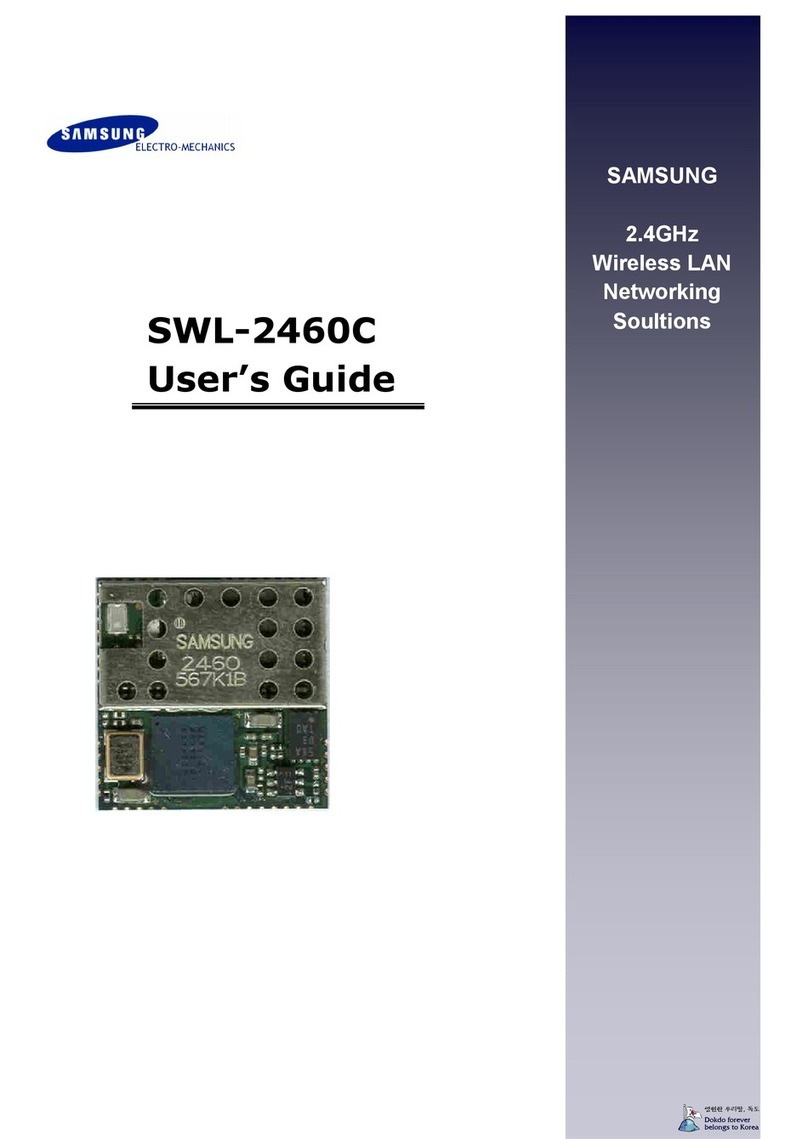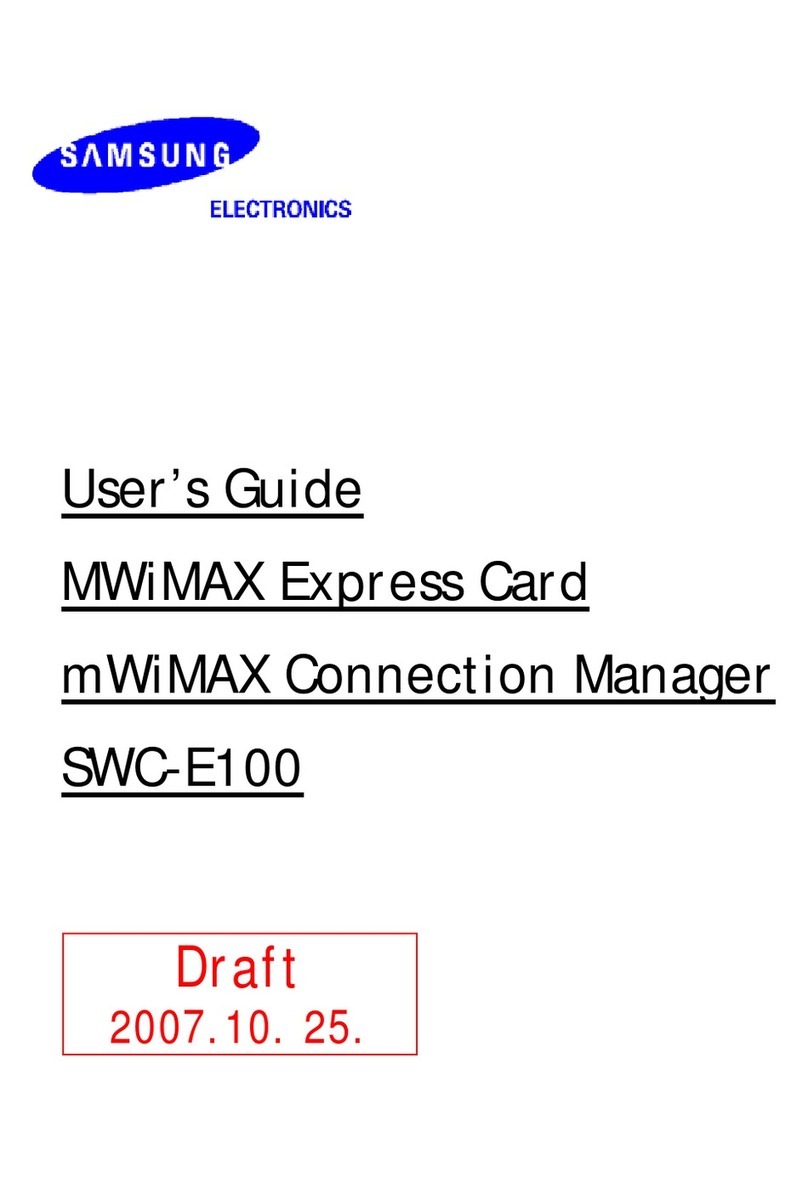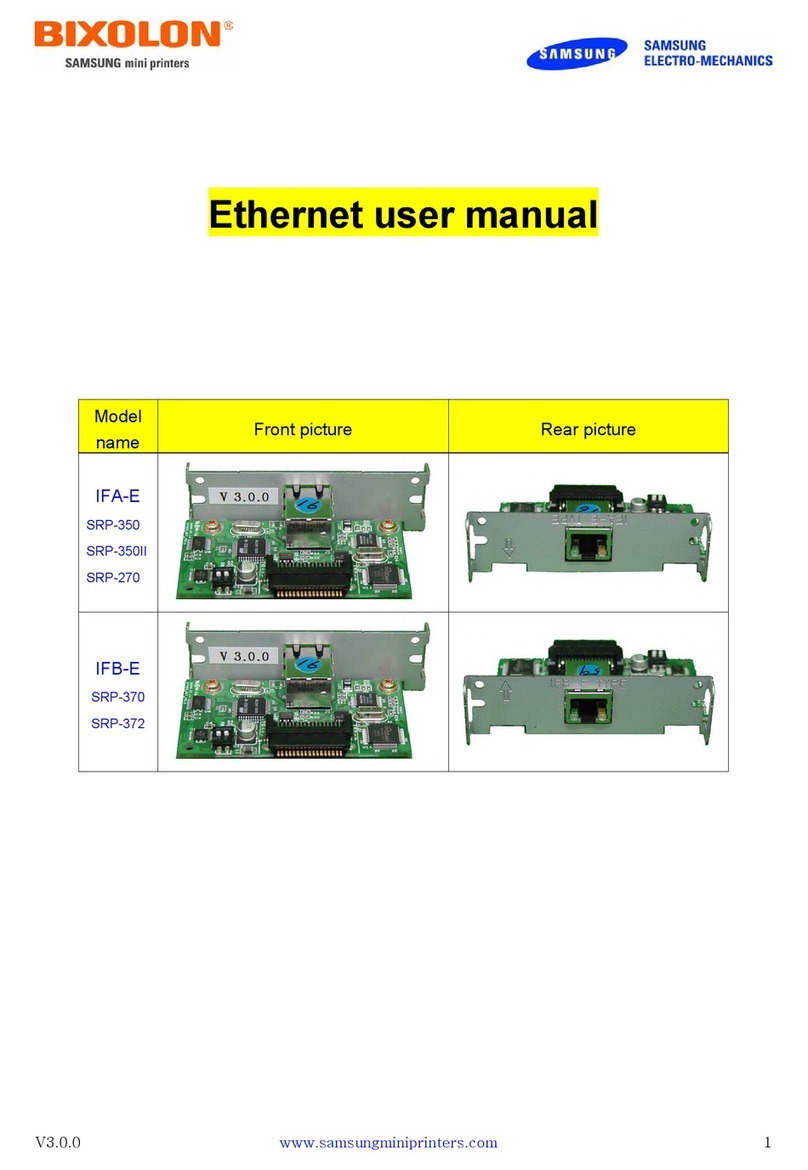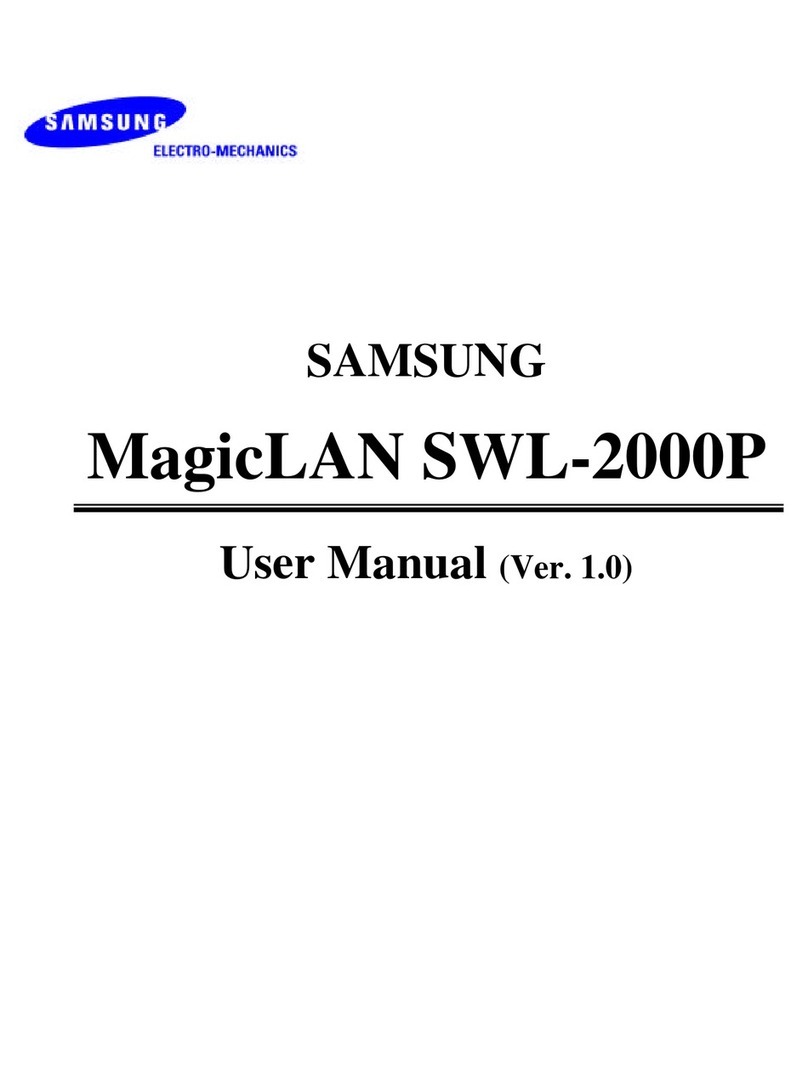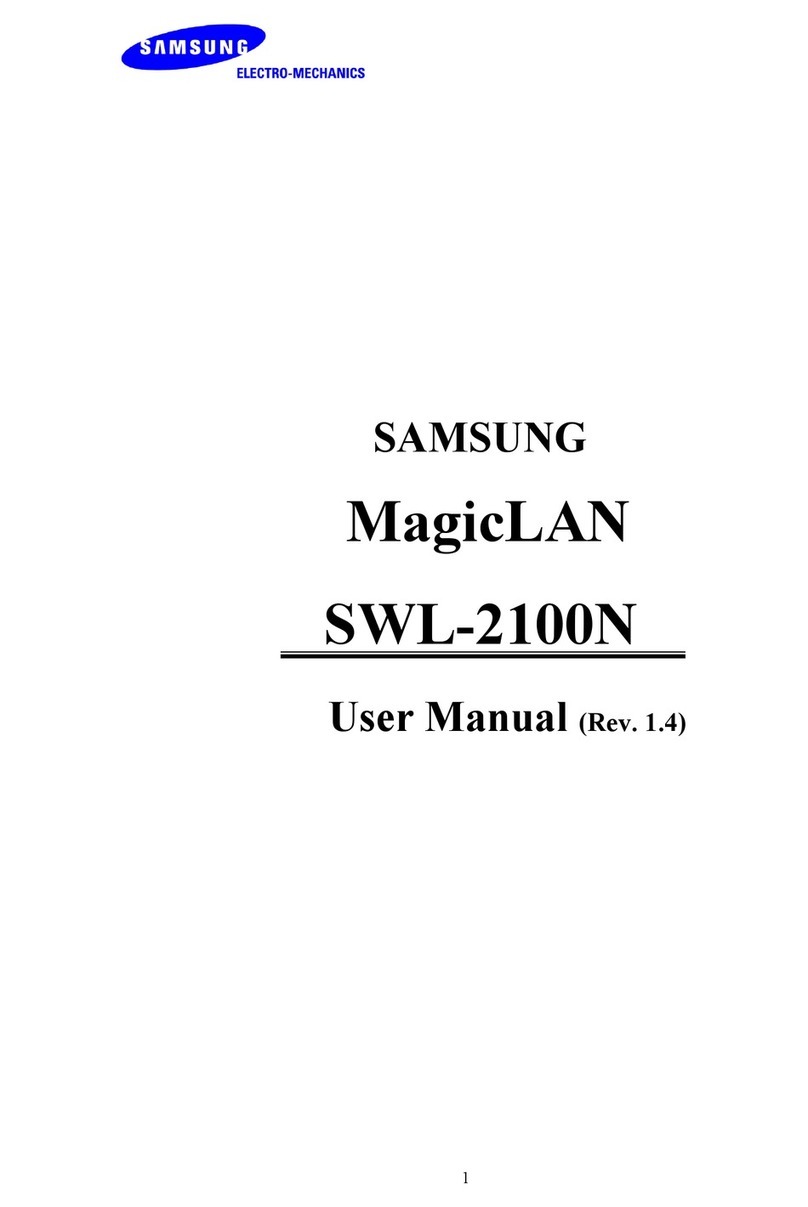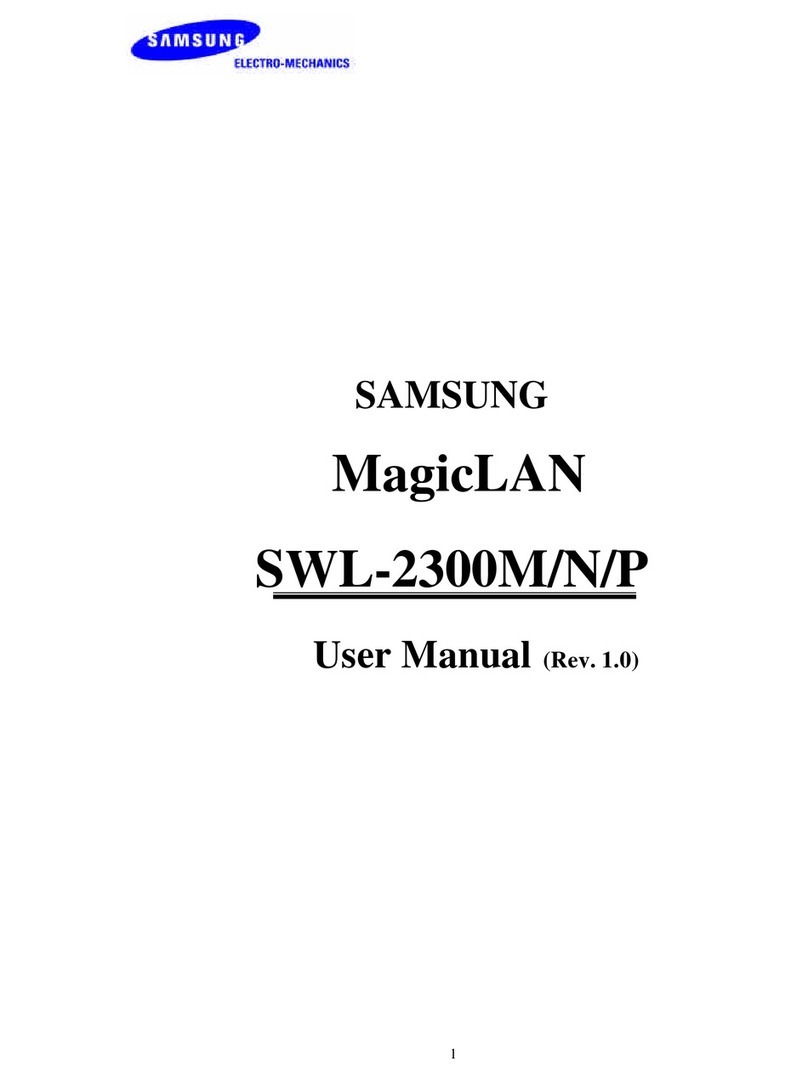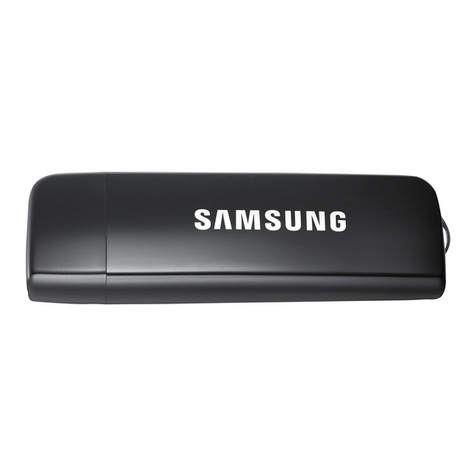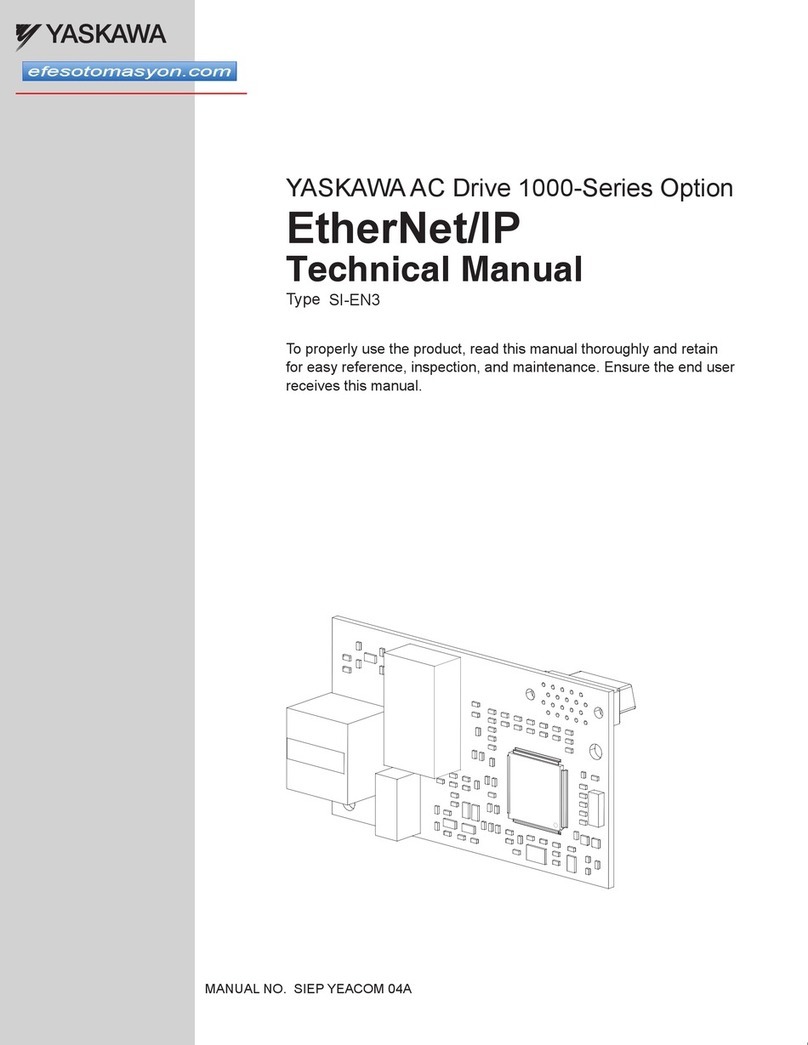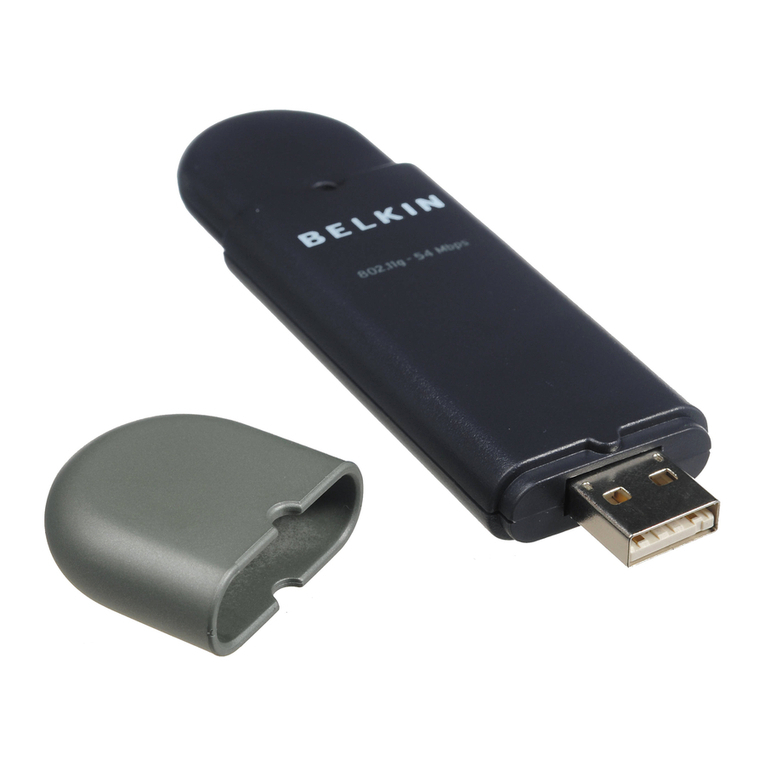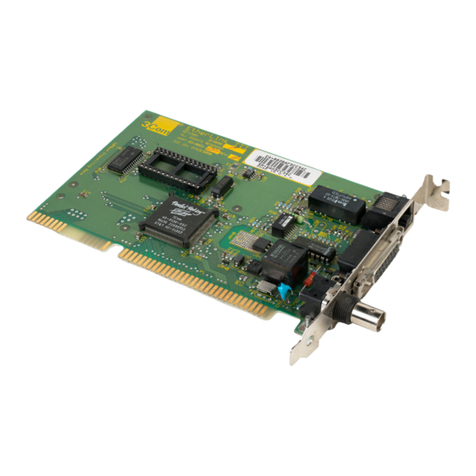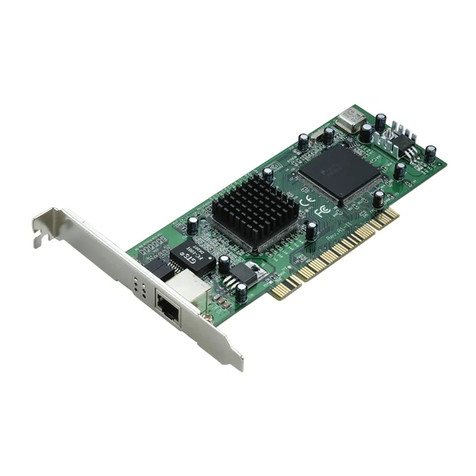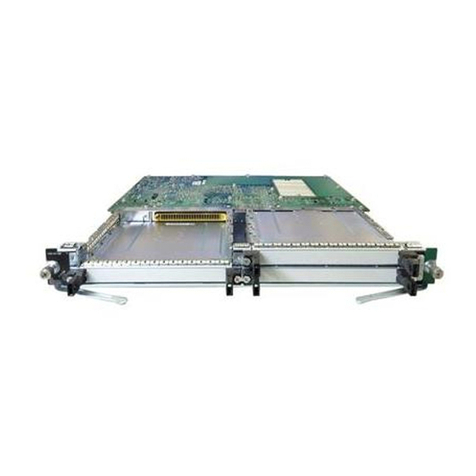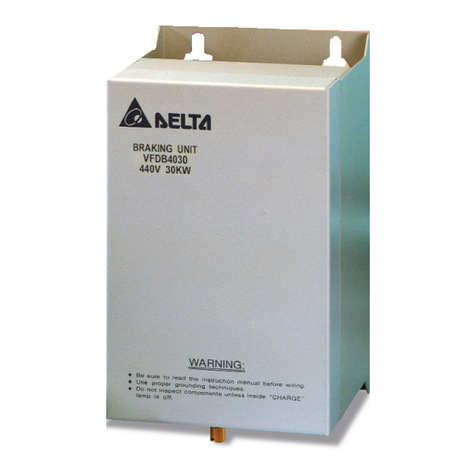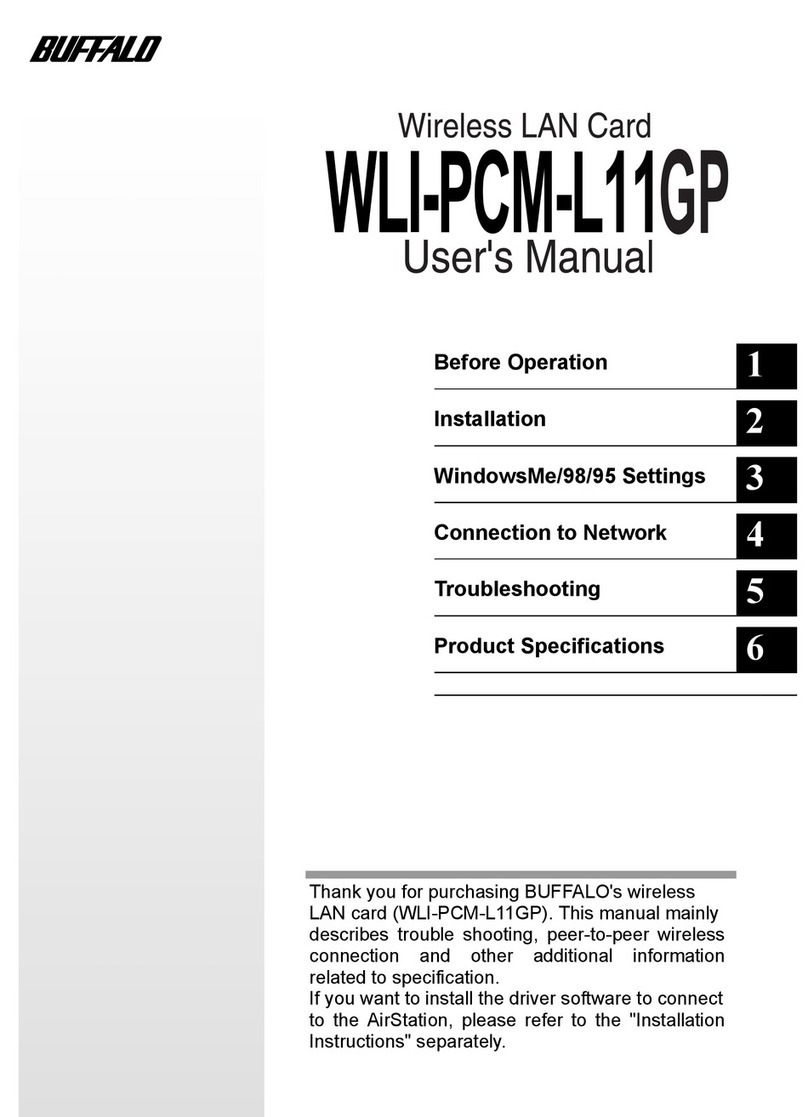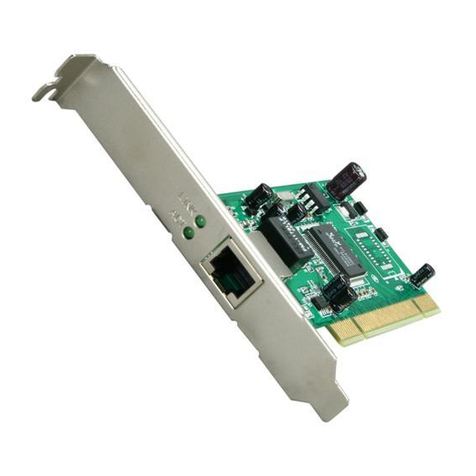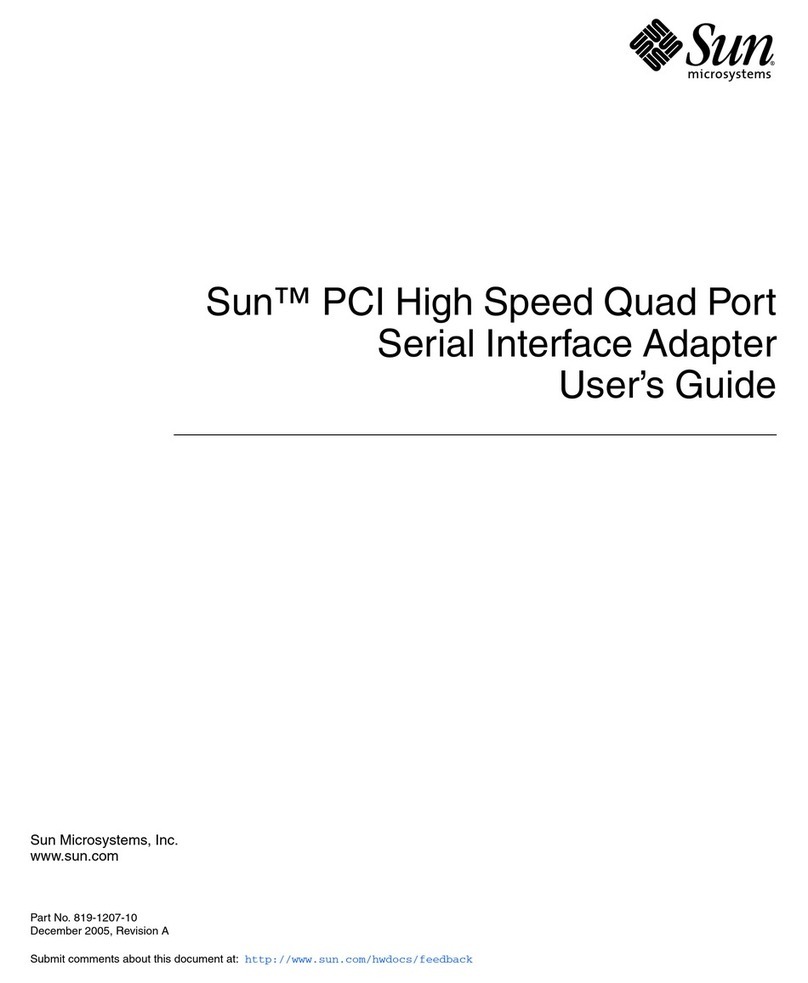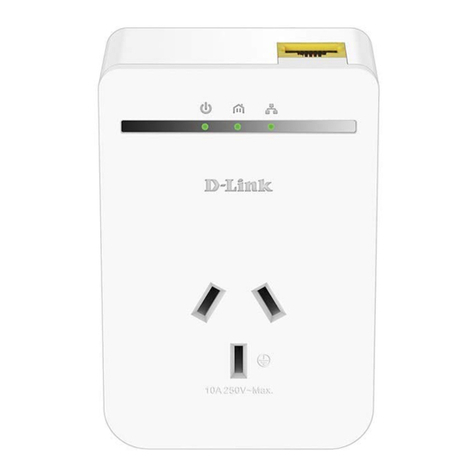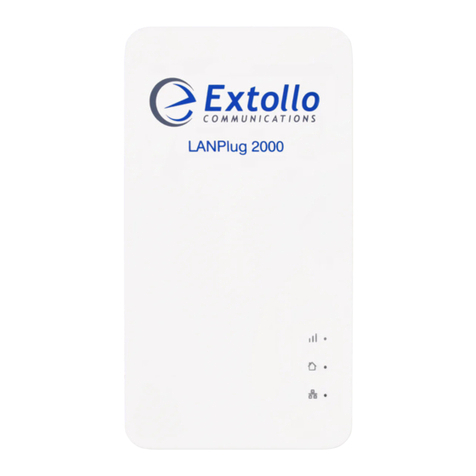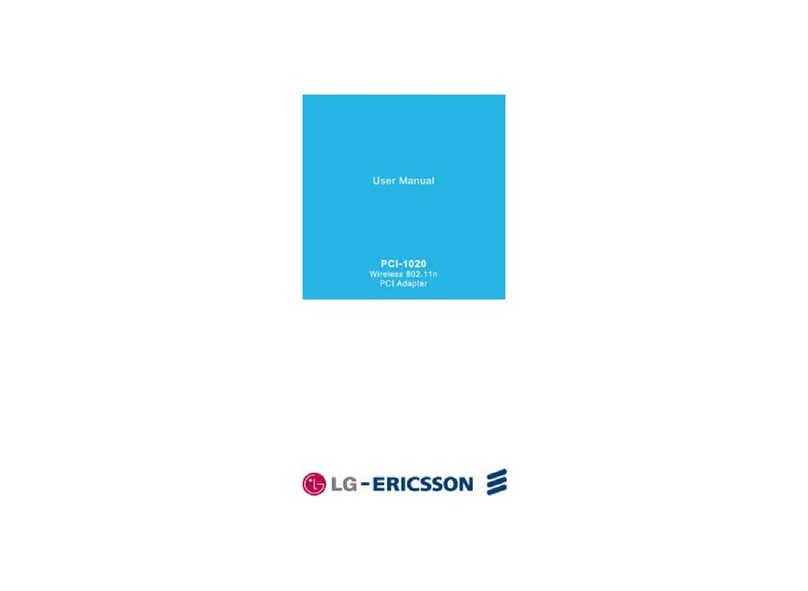TABLE OF CONTENTS
8 © SAMSUNG Electronics Co., Ltd.
CHAPTER 2. Configuration Overview 45
Installation................................................................................................................. 45
Installing the SVMi-20i..................................................................................... 45
Setting up the SVMi-20i................................................................................... 47
Connecting Optional Equipment ...................................................................... 52
Auto Configuration.................................................................................................... 58
Quick Setup.................................................................................................... 58
System Administration..................................................................................... 59
Configuration Tools................................................................................................... 60
Web Management........................................................................................... 60
DTMF System Administration .......................................................................... 63
Configuration Categories.......................................................................................... 66
Restoring the Factory Default Setting....................................................................... 66
Package Update ........................................................................................................ 67
CHAPTER 3. Configuration Management 69
System Main Menu.................................................................................................... 69
Open Block Table............................................................................................ 70
Save Application ............................................................................................. 71
Schedule Table ............................................................................................... 72
Subscriber List................................................................................................ 74
System Parameters......................................................................................... 75
Voice Studio.................................................................................................... 83
Operating Utilities............................................................................................ 85
Override Mode................................................................................................ 94
View System Report........................................................................................ 95
Site Information............................................................................................. 103
Status Screen ............................................................................................... 103
Explanation of Default Configuration ..................................................................... 105
Application Design ........................................................................................ 105
Import Basic Concepts .................................................................................. 106
Configuration Blocks ...............................................................................................111
Announcement Block .....................................................................................111
Audiotext Librarian Block............................................................................... 114
Bye Block ..................................................................................................... 118
Dial Block ..................................................................................................... 119
